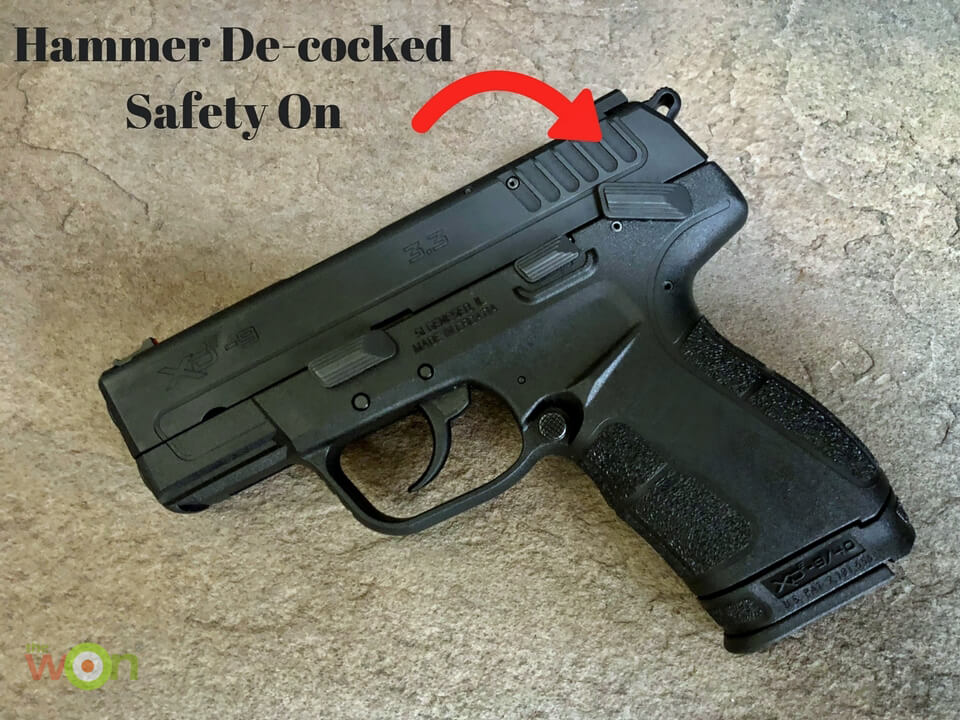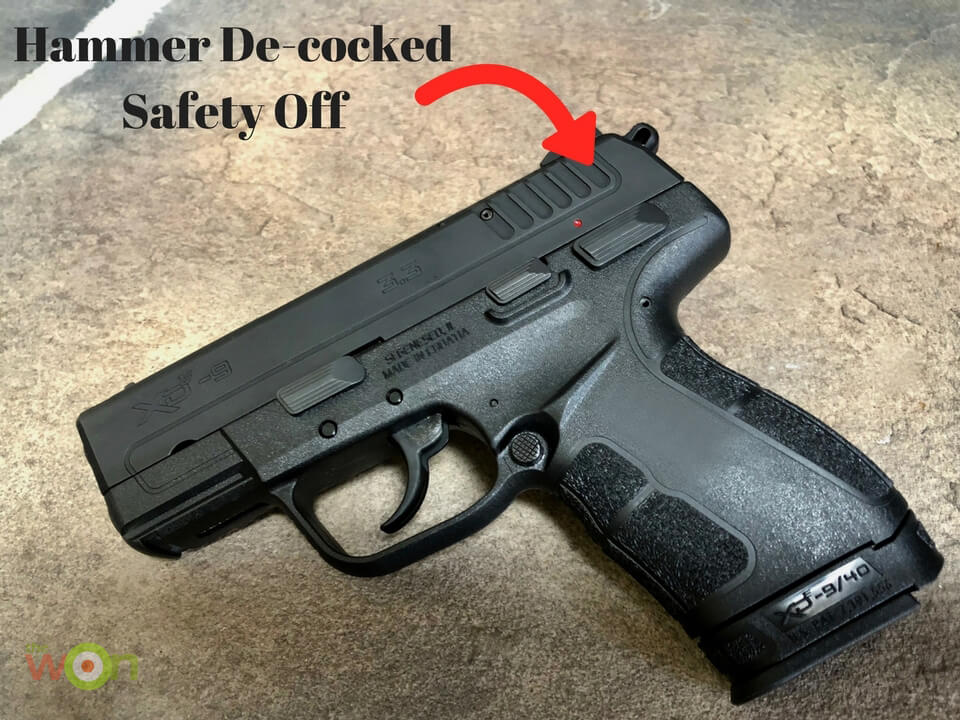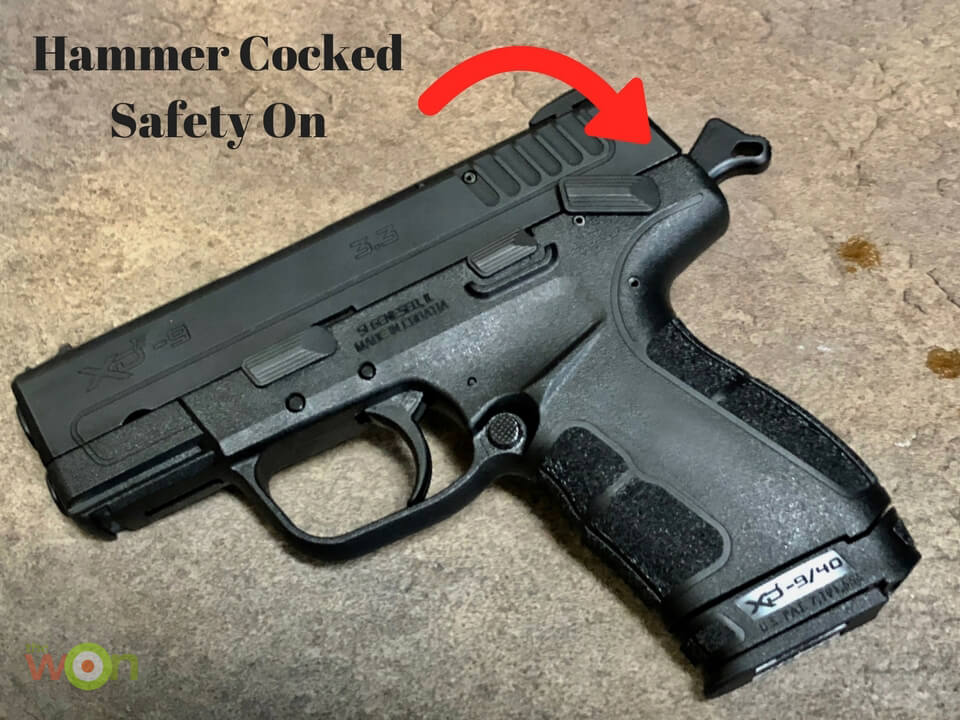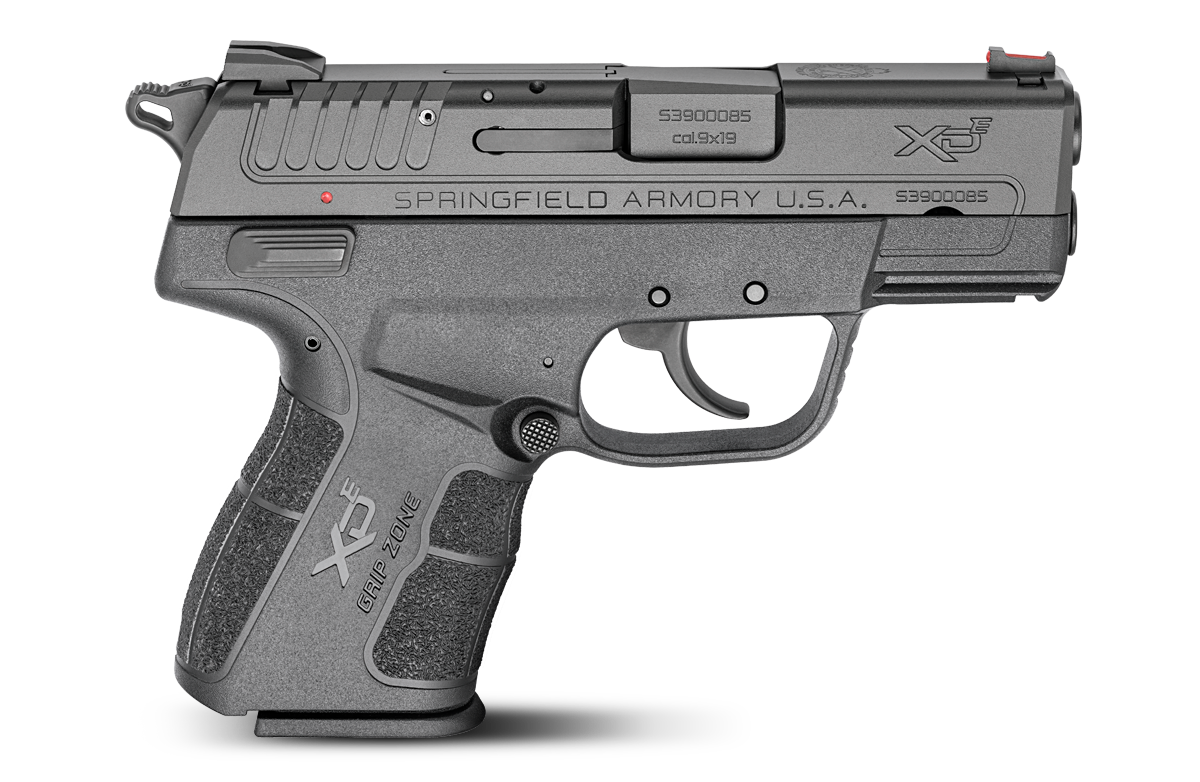Know Your Gun’s Carry Condition
April 11th, 2020
4 minute read
First, let me make one thing clear before you read on. This article is NOT about the best choice in pistols for concealed carry. Whether you choose to carry a revolver, striker fired, or double/single hammer driven pistol is very personal. You need to carry the type of pistol YOU find most comfortable carrying. However, regardless of the gun you choose, you need to know the condition of it whenever you carry.
1911s
The modern 1911, (like Springfield Armory’s EMP or 911) with its consistent and light trigger, usually has a firing pin block, manual thumb safety and a grip safety. Although I don’t agree with all of these, here are a few ways people carry a 1911.
- Chamber empty and the hammer down — This requires the user to rack the slide before firing.

- Safety engaged with a round in the chamber — The user engages the manual thumb safety before putting the gun in its holster. Prior to firing, the user deactivates the safety.

Double/Single Hammer Driven
Double Action/Single Action (DA/SA) guns (like Springfield Armory’s XD-E) are very popular for concealed carry because their condition is easily determined by appearance. Some DA/SA guns have a de-cock lever which doubles as a manual safety. These guns can be carried 3 different ways, depending on the user’s preference. I did not include any without a round in the chamber.
1. De-cocked, hammer down with the safety on. After the safety is deactivated the first shot is fired from double action.

2. De-cocked, hammer down and safety off. The first shot is from double action

3. Hammer cocked and the safety on, similar to a 1911.

It’s important to remember that in the first 2 methods of carry when racking the slide to chamber the first round, the hammer is cocked in single-action. The de-cocking lever should then be used to safely drop the hammer back into double action before returning to the holster. Those carrying in the first method also need to engage the manual thumb safety.
For the third method of carry, once you rack the slide to put a round in the chamber, the hammer is cocked. The user then engages the manual thumb safety and puts the pistol into the holster.
Practice
Make the decision to determine how you want to carry your DA/SA pistol. Once you decide, then practice should consist of drawing from the holster and returning to the holster in the correct condition. When using the manual thumb safety, deactivated it on the way to the target. Likewise, on the return to the holster activated the safety. When carrying the pistol de-cocked, the manual de-cocking lever should be used to de-cock the pistol before returning to the holster. Dry fire, without any ammunition present, and in a safe place, will greatly aid your drawing skills.

Revolvers and Striker Fired Pistols
I skipped revolvers and striker fired pistols. A revolver’s long, heavy trigger press gives users the feeling of safety when carrying concealed and revolvers don’t usually have external safeties. As for striker fired pistols, most have internal safeties that keep a gun from firing unless someone presses the trigger. Drop safeties/firing pin blocks, trigger safeties, and a variety of patented back-ups are standard on all. These mechanisms keep a gun from firing when dropped or don’t allow them to firing unless the trigger is pressed. Many of the striker fired pistols are offered with or without manual safeties. If your striker fired pistol has a manual safety, you should carry with it on and train accordingly.

Decide How YOU Carry
When deciding on a firearm to carry, choose one that makes YOU feel comfortable. Choose one that fits your hands and your needs. Make an educated decision as to what condition YOU want to carry. Remember, safety mechanisms on firearms are to help prevent an accidental discharge, but that they are a mechanical device and mechanical devices can and do fail.
Editor’s Note: The piece was shared with is by the Women’s Outdoor Network and can be viewed here. Also, please be sure to check out The Armory Life Forum, where you can comment about our daily articles, as well as just talk guns and gear. Click the “Go To Forum Thread” link below to jump in!
Join the Discussion
Featured in this article
Continue Reading
Did you enjoy this article?

 115
115








